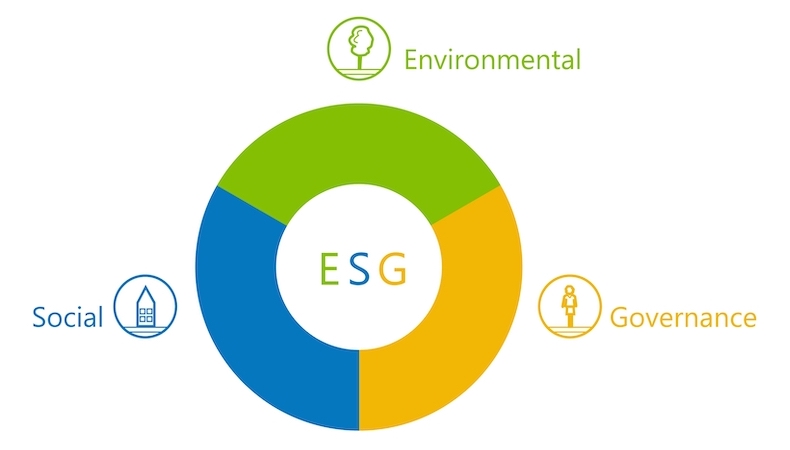Integrating employee benefits into corporate ESG policies
The drive for businesses to be socially responsible, with robust environmental, social, and governance (ESG) standards is growing. A recent study by ECI Partners revealed a striking shift: ESG is now considered to be as important as profit for three-quarters of UK CEOs.
However, for ESG values to be fully integrated within a business, ESG needs to transcend policy and permeate every aspect of a business - from its operations and functions, through to its employee benefits and wellbeing incentives.
Our recent research report, Benefits Design Research 2023: Adapting to external and internal business change in partnership with REBA showed that fairness, inclusivity, sustainability, and wellbeing are now key drivers for benefits.
Employees want to work for companies that champion ESG values, and increasingly, businesses are selecting suppliers and partners based on their ESG track records.
However, our report also highlight that companies could do more to make this successful. Almost one-third of organisations said their benefits strategy was ineffective at supporting DEI goals.
So, what needs to change? How can businesses get this aspect of their programmes right and ensure benefits and wellbeing are aligned with their corporate ESG goals?
New ways of thinking
To link employee benefits and ESG isn’t simply a case of introducing certain benefits; it requires a strategic approach and a different mindset.
Organisations need to think through an ESG lens and apply it to all aspects of benefit and wellbeing programmes. As companies make decisions about the benefits, they must also question if they support their ESG goals.
For example, if a company decides to adopt a digital-only, paperless approach to launching a new ESG policy to address environmental concerns, then all other benefits need to be reviewed through the same lens and it needs to be applied to partners too.
For instance, is the company’s health provider providing information via printed booklets or the pension provider sending annual paper statements? Are there alternative digital options or should they switch to a more sustainable benefit provider?
There are many merits in going paperless, including reducing the impact on forests, decreasing waste, cutting energy usage, and combating climate change. It’s a practical solution for linking benefits with corporate ESG policy, without changing the actual benefits on offer.
Consider the different ESG pillars
To fully integrate ESG in a business, all the different parts of ESG – environmental, social and governance - need to be considered in relation to employee benefits.
Companies need to look at how they can remove some of the negative environmental impacts of what they do as a business. This could involve reducing their carbon footprint or looking at more sustainable investments for the pension fund.
To meet social goals, a business could review whether their benefits are equally accessible for everyone in the business. If not, could this be improved? Outside the organisation, can employees participate in charitable giving and volunteering programmes or, if programmes are already in place, how engaged are people?
Encouraging people to be good citizens not only fits with the corporate ESG policy, but can have a positive impact on wellbeing, improve mental and physical health, reduce stress, anxiety and depression, and provide a sense of purpose.
Finally, governance is about how organisations can tighten controls and processes to reduce risk and protect the organisation. The way benefits are operated and delivered needs to be managed so that there is no negative comeback for the business.
No company wants to be front page news because they have lost member data in relation to their pension scheme. Ensuring good governance is a vital part of running a pension scheme, but this can be applied to any aspect of a benefit and wellbeing programme.
Through these different lenses organisations can assess their benefits to see if they match business ambitions and make informed decisions on any changes needed.
What steps can organisations take?
To ensure employee benefit and wellbeing programme reflect ESG priorities it’s essential for organisations to carry out a review once or twice a year. This goes beyond the traditional assessment of value, reward, and engagement; it’s about evaluating it through an ESG lens. Aligning benefits with ESG goals will mean asking a new set of questions when conducting the review to analyse how it stacks up against the three ESG pillars.
Ultimately, conducting a review through ESG eyes can help reshape benefits and wellbeing to align with corporate ESG values, which can contribute to a cultural shift within the organisation that puts sustainability, ethics, and the wellbeing of employees at its core. This is essential to not only keep up with societal change but for long-term business success.
Howden Employee Benefits and Wellbeing works with businesses of all sizes to help them develop a benefits strategy that balances the needs of the business, its people and budget. For more information, click here.
Supplied by REBA Associate Member, Howden Employee Benefits
Howden provides insurance broking, risk management and claims consulting services, globally. We work with clients of all sizes to provide dedicated employee benefits & wellbeing consultancy.








